In early 2018 we started work on creating a natural wildlife pond. We needed a source of water for the croft and realised a pond would provide this as well as being of great ecological benefit. We thought it would look awesome too.
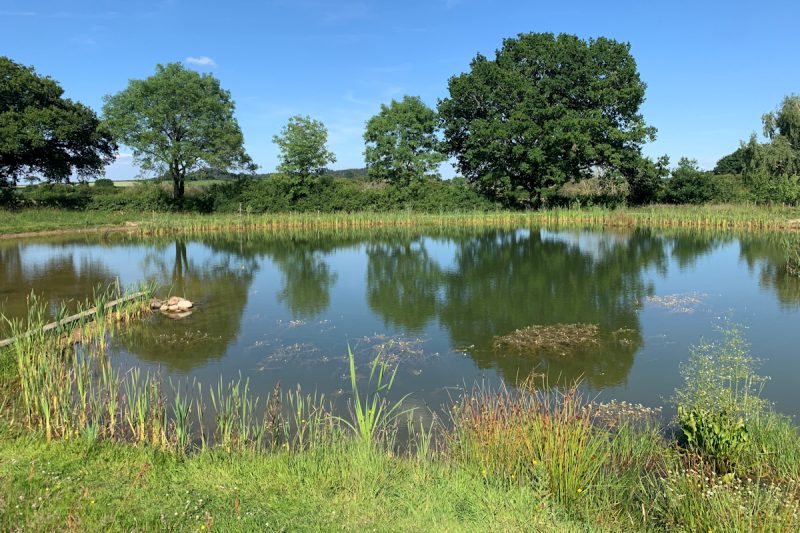
But the result had to be as natural as possible, with no artificial lining, no pumps, no buildings or other structures and filled with only native plants, which would help clean and oxygenate the water and provide food and shelter for the wildlife that would come to it. And all spoil from the digging had to be kept on site.
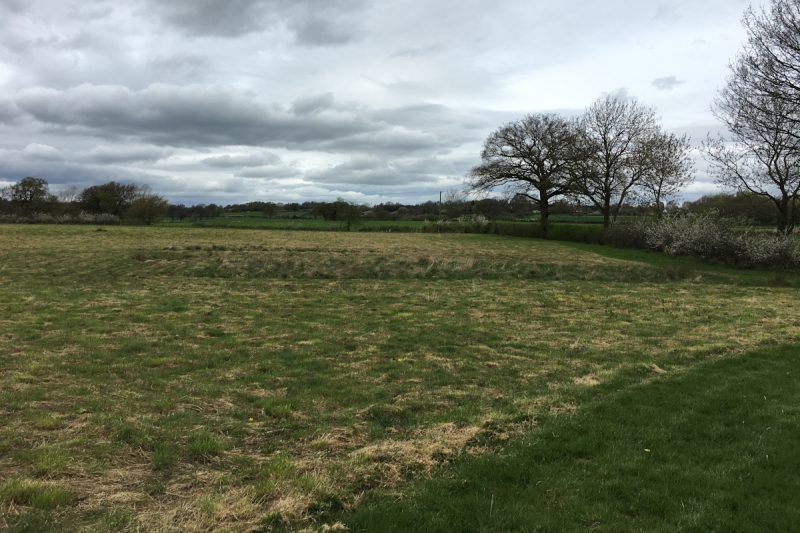
We identified a part of the field where there may once have been a pond: a low-lying area, waterlogged for much of the year. A great bonus of this site was that only water from the field drained into it: this meant we would have complete control over the quality of the pond water. Test holes revealed a thick layer of clay under the topsoil that we hoped would be deep enough to hold the water. We started digging…
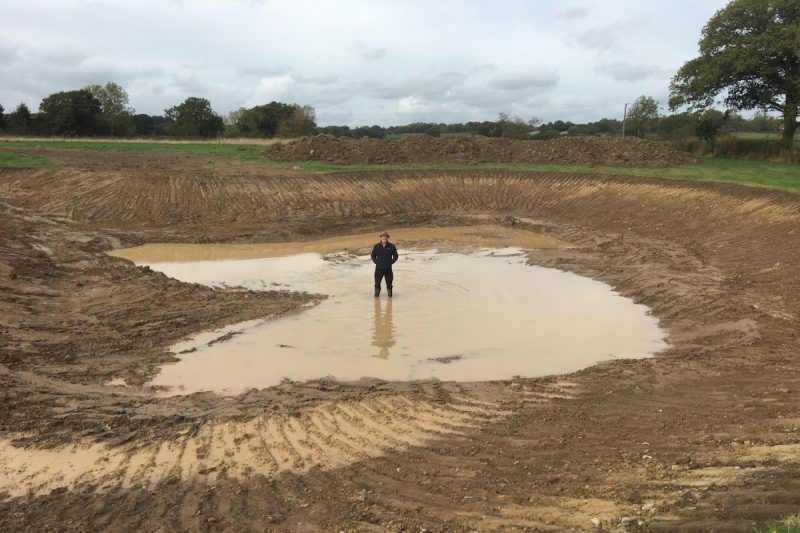
… and made a hole load of mud as we dug. We redeployed all the spoil around the field: improving drainage in some areas and creating different wildlife habitats in others. As we had hoped, the clay held the rain and the pond started to fill with water. We sat back and waited…
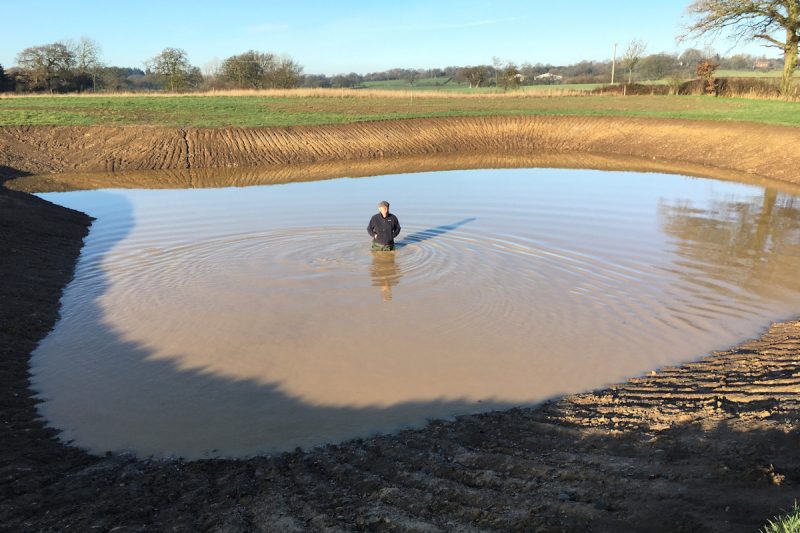
… and we didn’t need to wait long: with the winter came the rain and as the field became saturated and the old clay pipes of the field drains opened up, the water rapidly rose. Once spring started the water began to clear and plants appeared around the edges, and in the water. By autumn 2019 the pond looked like this:
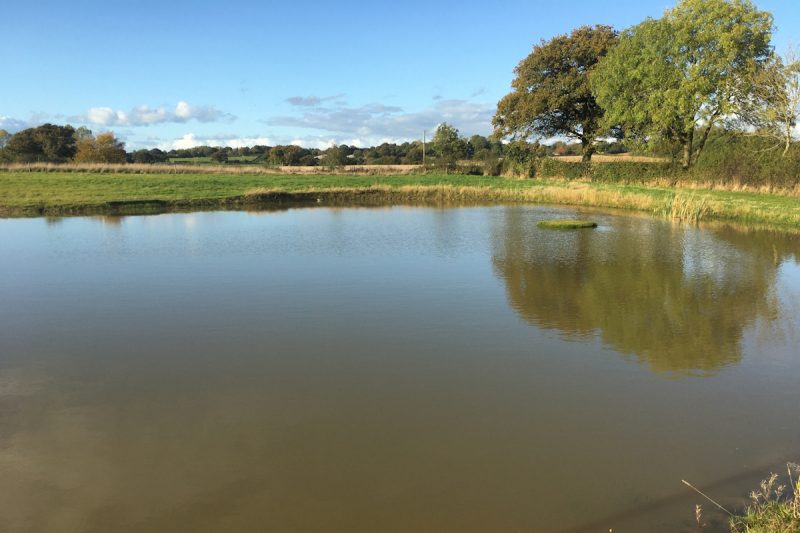
Since then we have done further work on creating different habits around the pond and have planted a wide range of native British plants, all this with the aim of maximising the potential for wildlife and the biodiversity. Willows, reeds, bulrush, bog bean, pendulous sedge, water figwort and other wonderfully named plants and wildflowers. Water crowfoot and rushes have somehow found their own way here, together with frogs, toads, newts, dragonflies, swallows, bats, moorhens, ducks, geese, and the occasional swan.
All the hard work is done now: any more digging will just be tinkering around the edges. Over the next few years the pond should continue to mature into something we think is simply A Very Good Thing.
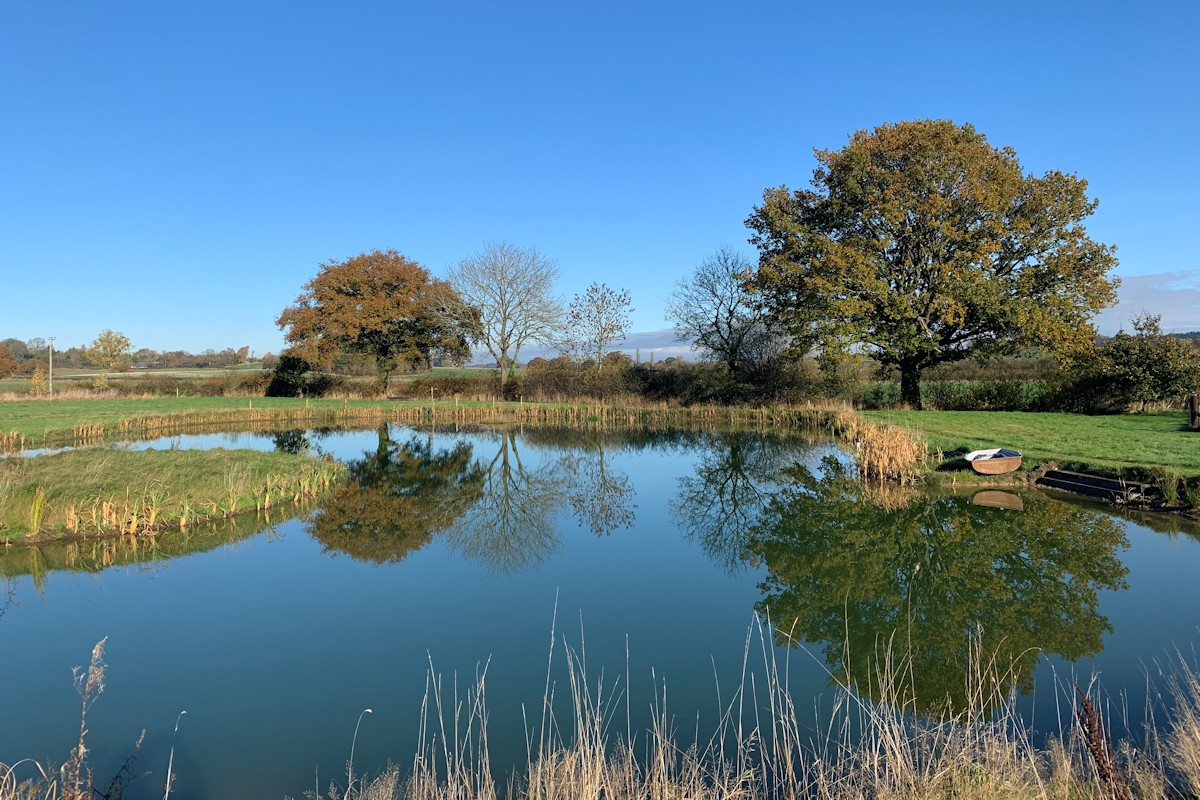

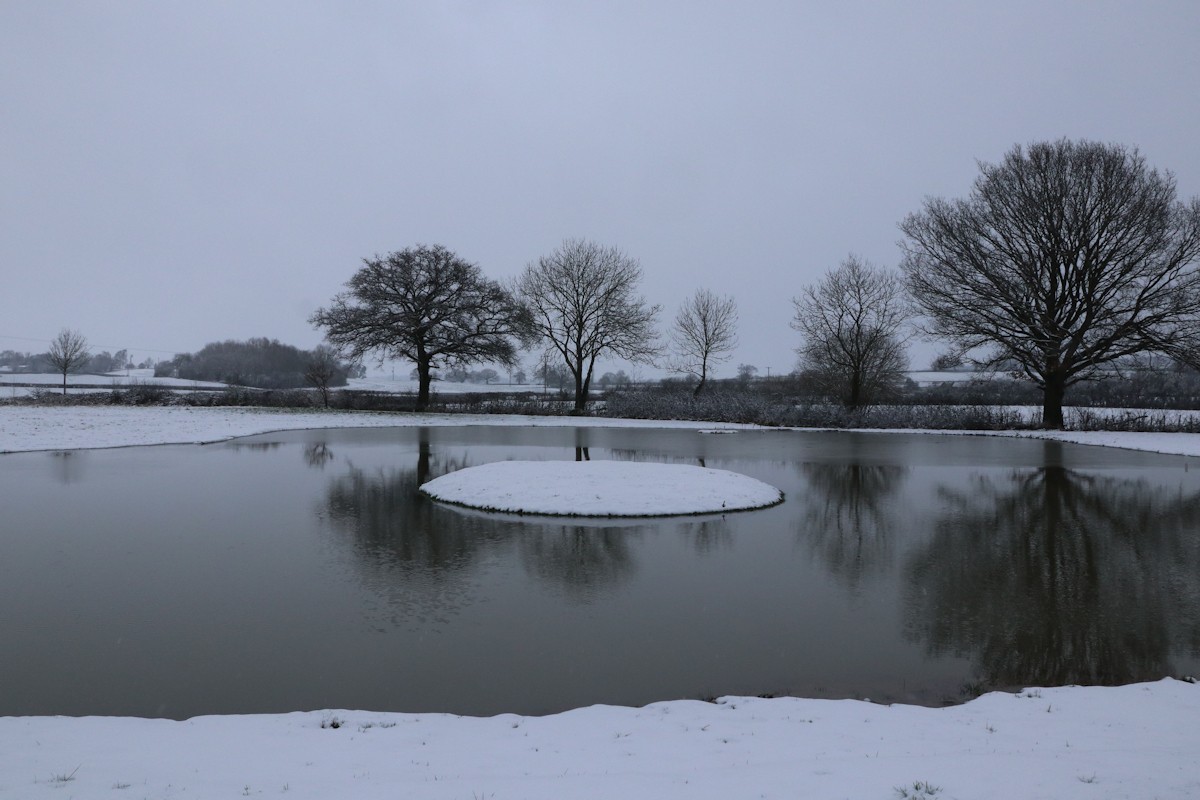
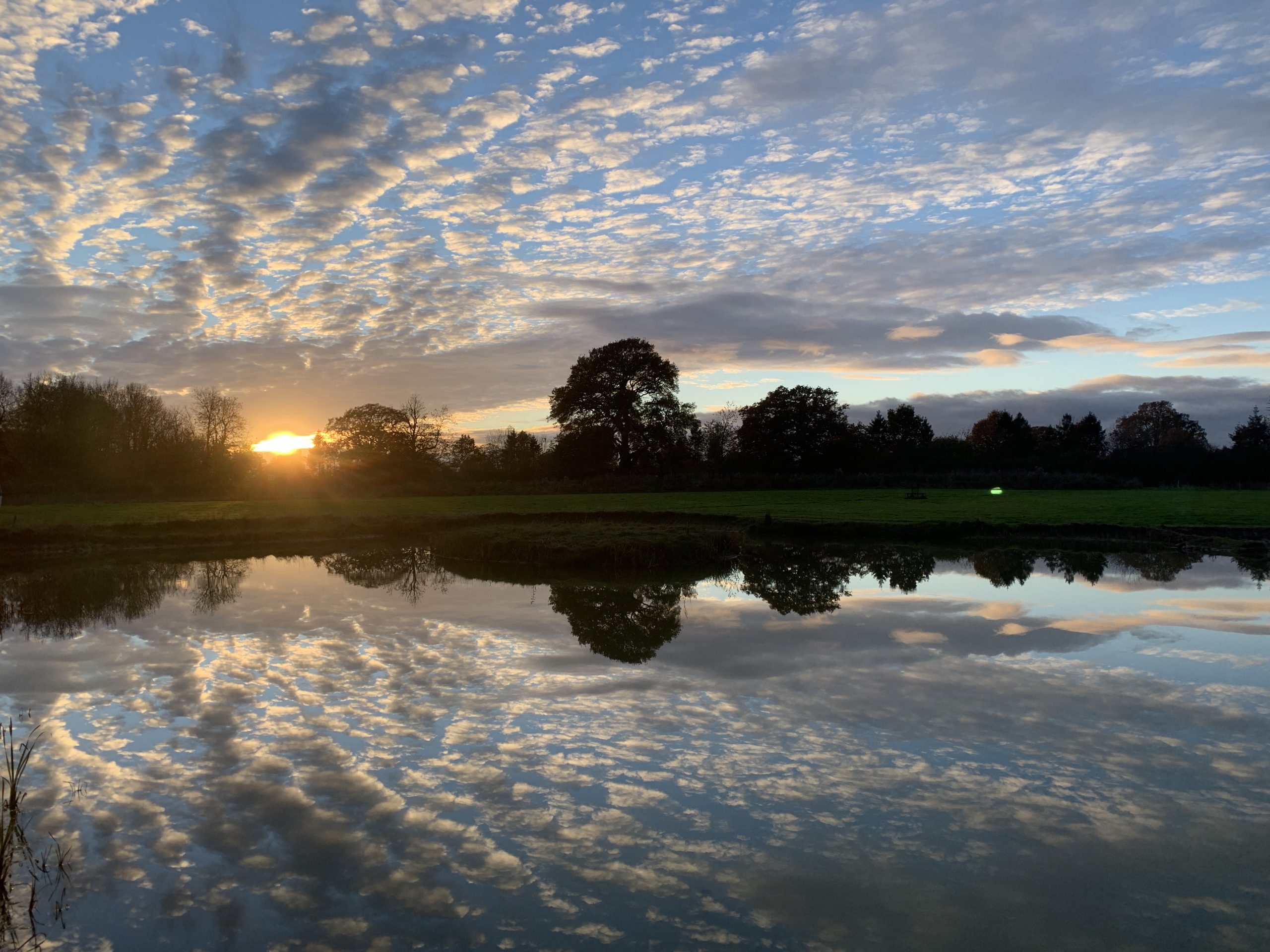
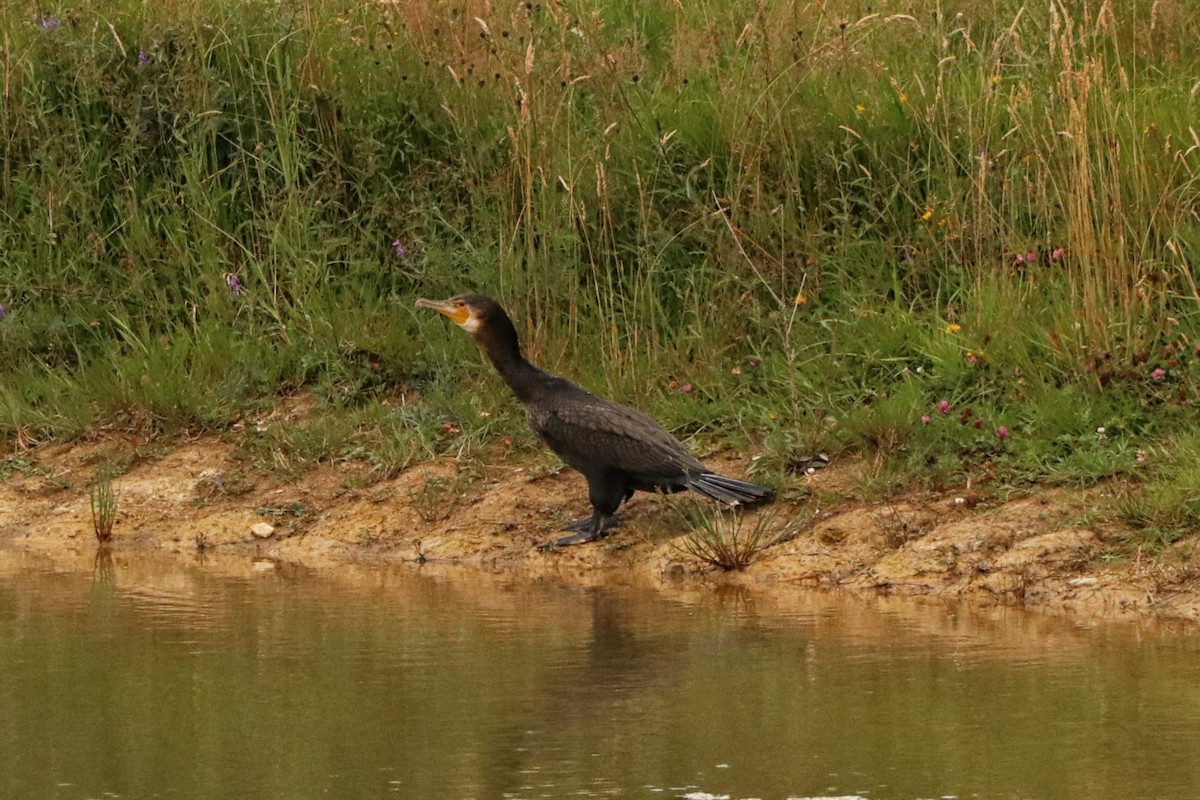
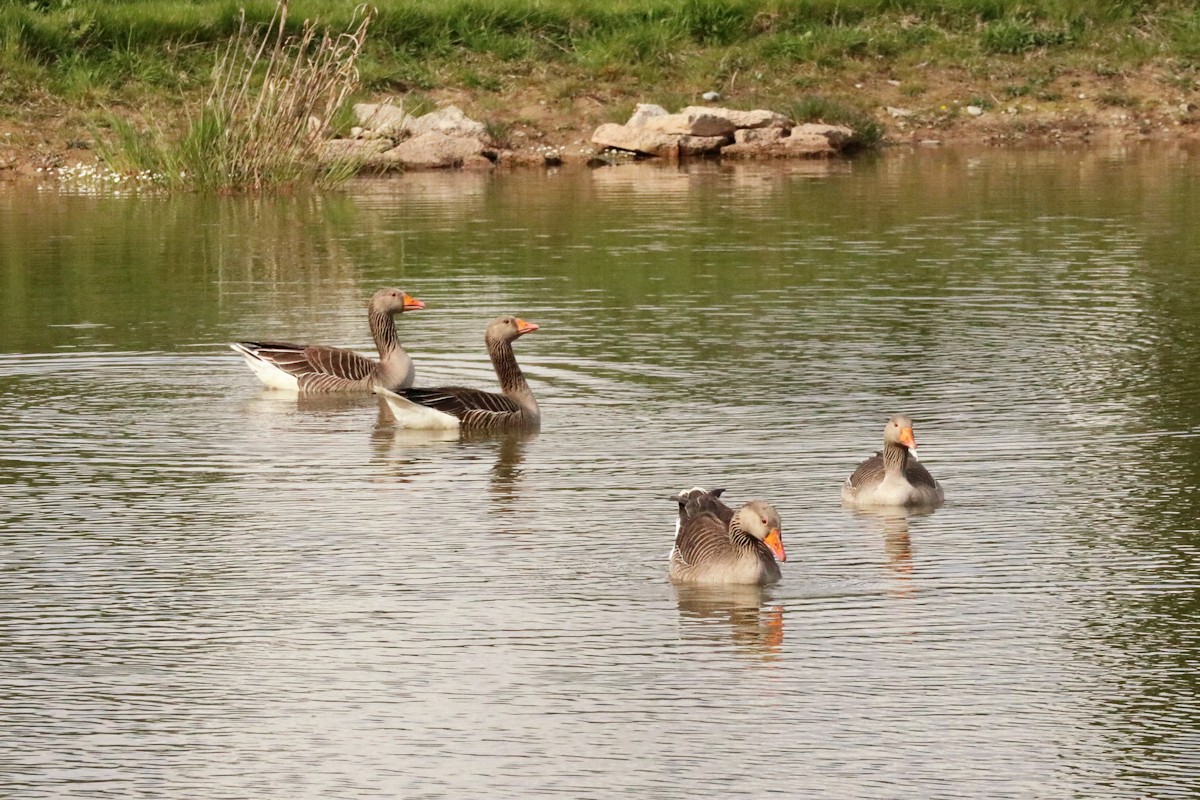


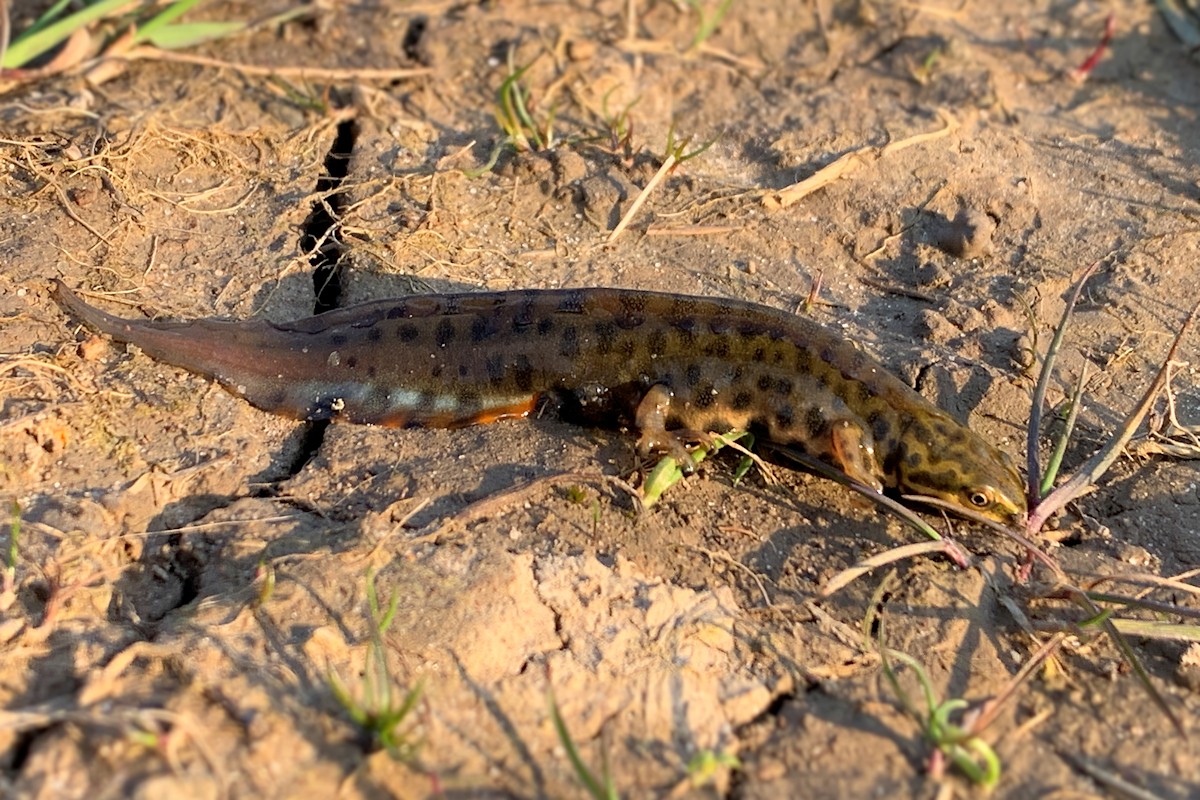
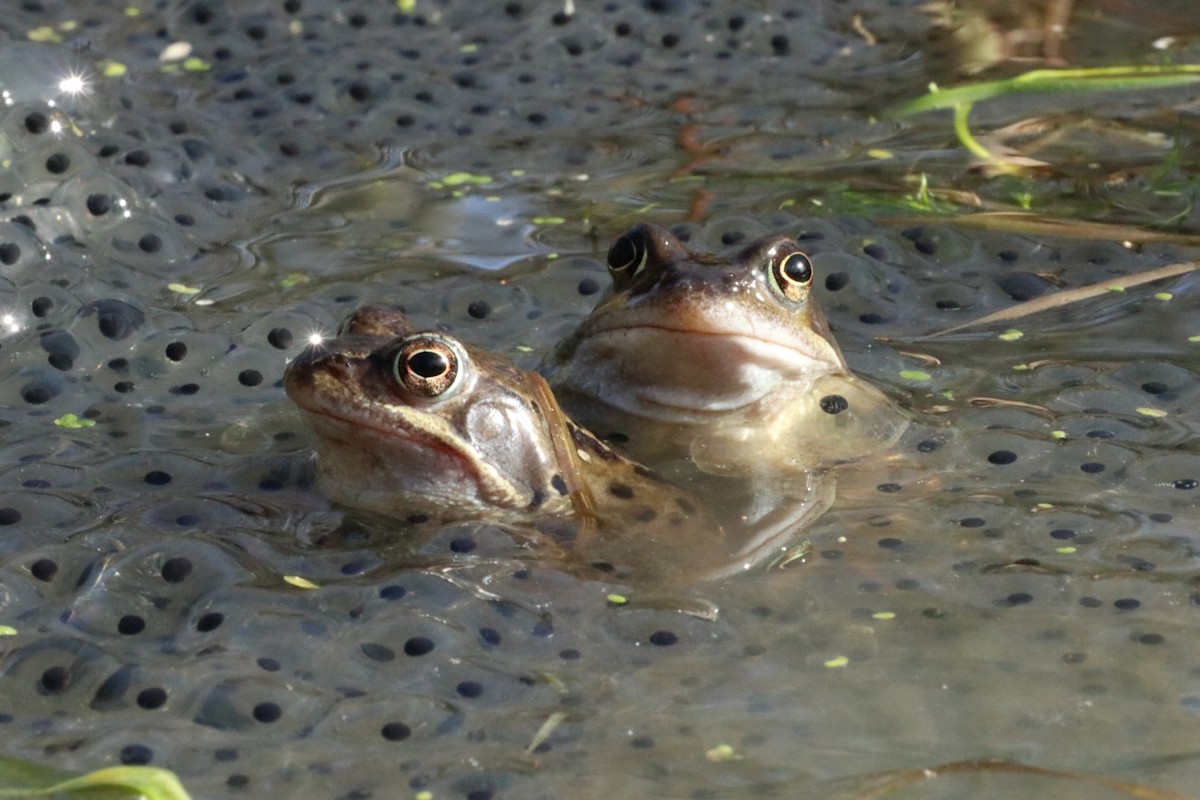
Updated January 2022
